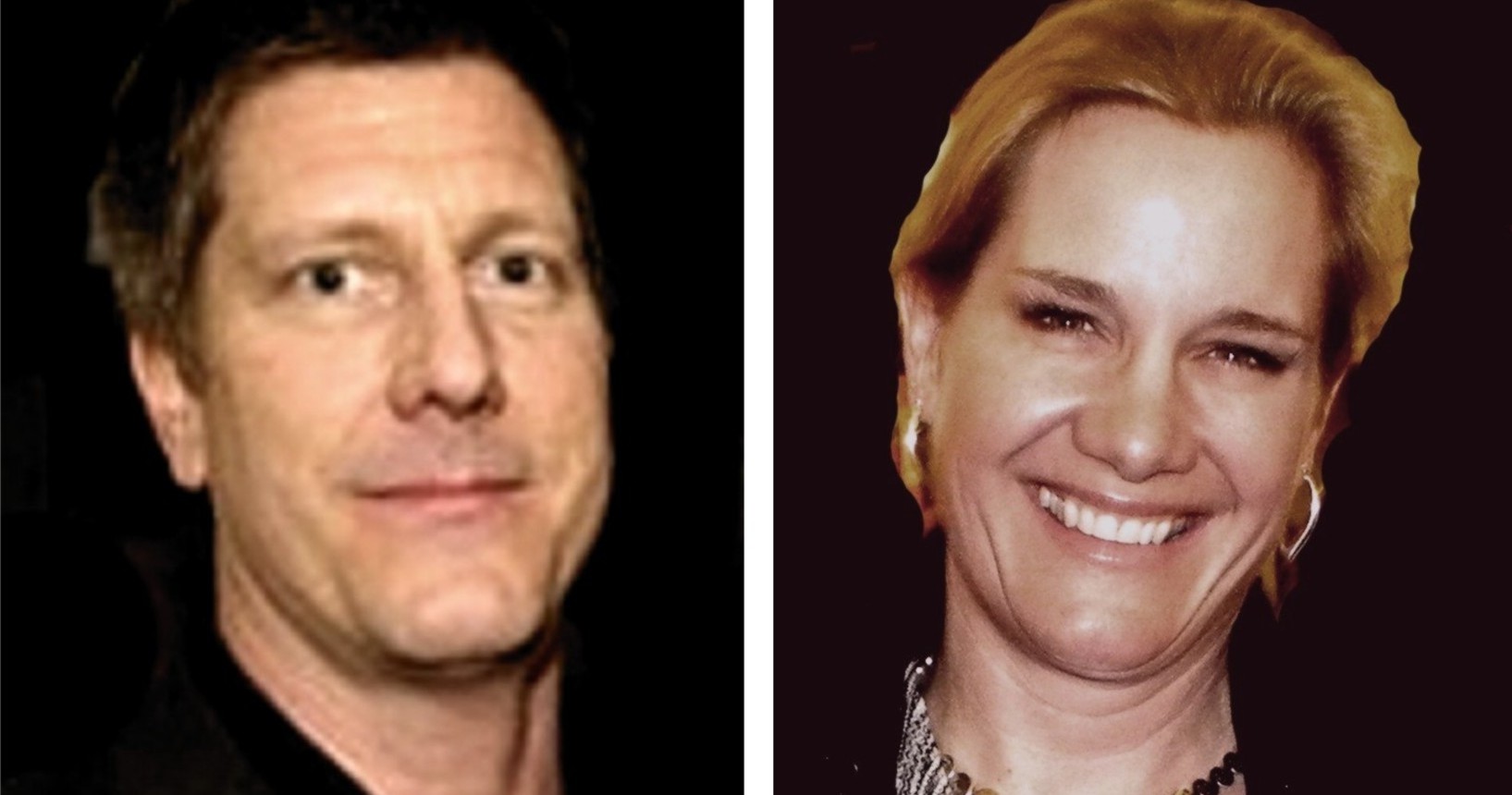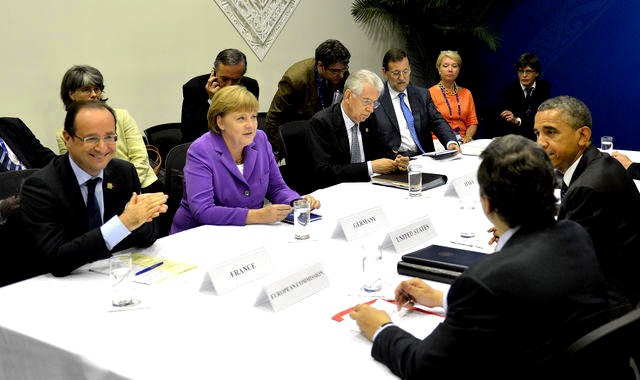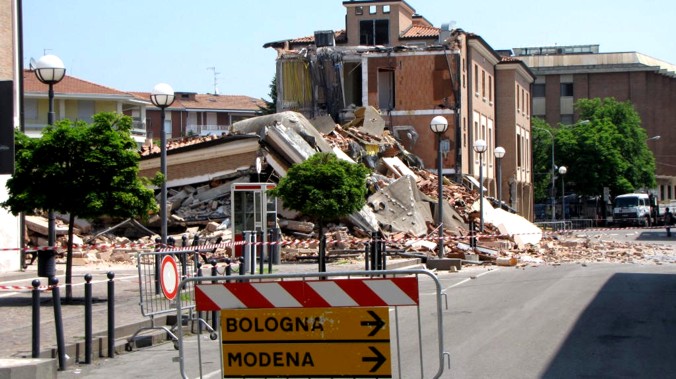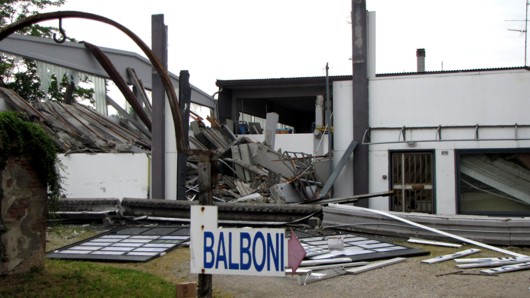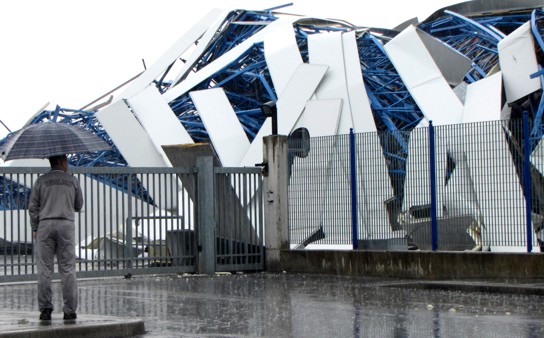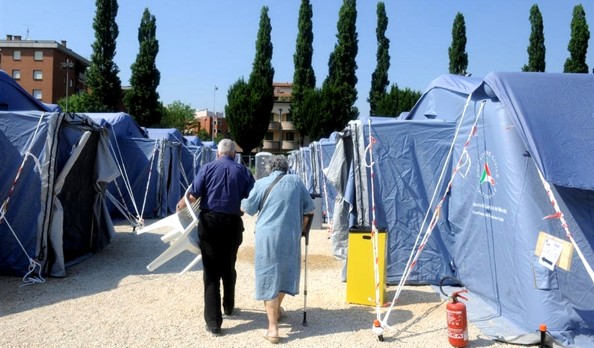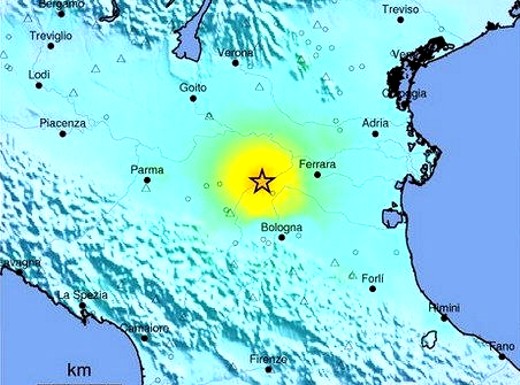
Wednesday, June 20, 2012
With Italy Pushing, There Are Increasing Bets On Europe Settling On A Growth Plan B
Posted by Peter Quennell
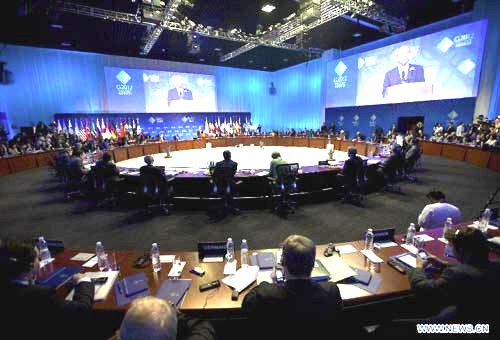
[Above and below: the G20 meeting in Baja California and the Los Cabos resort]
At the G20 Summit now taking place on the Baja Peninsula Italy and France have just strongly pushed for the creation of Euro-bonds.
The rates for such bonds to be secured mostly by gold (mostly on deposit in the Federal Reserve Bank in New York - where a lot of Europe’s troubles began!) would reflect investors’ perceptions of the growth potential of all of Europe, not just Greece or Spain or Italy or Portugal or Ireland by themselves.
A cheaper cost of capital across Europe would help to make the value equations start to come right. Far better than Germany’s imposed Plan A which is essentially austerity during a recession and nothing else.
In contrast the German economy is actually doing very nicely right now, with high growth and low unemployment and strong exports and huge swathes of capital moving into its rather strapped banks from the countries further south. Other things being equal, Germany could live with a “half pregnant” situation for quite a while.
But thankfully, there are two dark clouds on Germany’s horizon which may cause it to end its power trip.
First, Greece and Spain and Italy could all vote in radical-left governments within a year if austerity remains the entire mix. And second, the entire world could move into recession or even depression and then Germany would slow down along with everybody else.
Germany could do everyone a lot of good if it stopped the moralising and instead shared with all the other countries how its own extended growth came about.
It is worth reading the Wikipedia entry for Germany’s history of growth. Two post WWII concepts made a huge difference and still do. Here they are in bold.
The Germans proudly label their economy a “soziale Marktwirtschaft,” or “social market economy,” to show that the system as it has developed after World War II has both a material and a social””or human””dimension. They stress the importance of the term “market” because after the Nazi experience they wanted an economy free of state intervention and domination. The only state role in the new West German economy was to protect the competitive environment from monopolistic or oligopolistic tendencies””including its own.
The term “social” is stressed because West Germans wanted an economy that would not only help the wealthy but also care for the workers and others who might not prove able to cope with the strenuous competitive demands of a market economy. The term “social” was chosen rather than “socialist” to distinguish their system from those in which the state claimed the right to direct the economy or to intervene in it.
Beyond these principles of the social market economy, but linked to it, comes a more traditional German concept, that of Ordnung, which can be directly translated to mean order but which really means an economy, society, and policy that are structured but not dictatorial. The founders of the social market economy insisted that Denken in Ordnungen””to think in terms of systems of order””was essential. They also spoke of Ordo-Liberalismus because the essence of the concept is that this must be a freely chosen order, not a command order.
This is in many ways the opposite of the tunnel-vision Washington Consensus which the IMF and World Bank and United States for far too long wrongly imposed on the world - and of which Euro-austerity is its devil spawn.
You can find a similar philosophy to Germany’s in Japan with the Keiretsu which saw it rocket up in the 60s and 70s, and which was picked up by the Little Dragons and China and finally all the middle-tier economies seeing recent strong growth.
Europe needs to further shore up and educate its manpower. That is a no-brainer. But its major growth breakout will only come if it tweaks and reinvents its millions of technical and managerial systems, just as Germany does. And if it demonstrates a very sharp nose for future value - as in fact Italy’s nimble entreprenuers already do.
It’s smart systems to create high value that you need, guys. Don’t let the over-intrusive and not-very-enlightened economists and central bankers and politicians tell you different.
Wednesday, June 13, 2012
Today And Tomorrow Are Really Key Days For The Italian Economy If Future Sums Are To Work
Posted by Peter Quennell
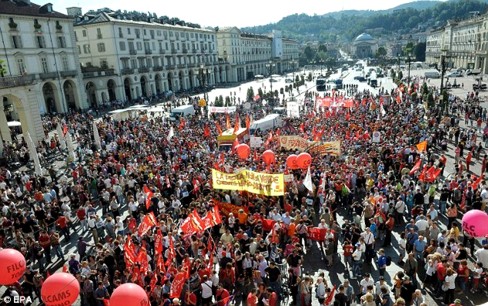
[Above: a demonstration against austerity, in Turin, one of several hundred in recent days]
The Italy central bank is selling a lot of bonds today and tomorrow to keep the government in business.
Today’s sale of 12-month bonds did not go well. It sold E6.5 billion of bonds at nearly 4 percent, almost double what it was charged just last month. And tomorrow’s sale of long-term bonds could be looking at interest rates so high that it puts real growth almost permanently out of reach.
In effect it could bake in youth unemployment up to 25 percent. The good news, if there is any, is that the disappointing sale today gave Prime Minister Monti a reason to light a fire under the parliament.
talian Premier Mario Monti is urging lawmakers to accelerate passage of reforms to help the country escape the deepening debt crisis and assure international markets that the eurozone’s third largest economy will follow words with actions.
Monti addressed the lower house before a vote on anti-corruption measures, and the morning after meeting leaders of three main political forces to urge them to intensify the reform course.
Spain’s decision over the weekend to seek a bailout for its banks has heightened pressure on Italy. The Austrian finance minister suggested this week that Italy too will need a bailout, then backtracked under criticism.
Monti has firmly denied that Italy will need a bailout, and told lawmakers that Italy is on much better footing than a few months ago.
One thing going for Italy is that those bonds are largely purchased by Italians themselves. Savings have been flying out of Greece and Spain but Italians still seem optimistic at some level that their economy can get back to former heights
Mr Monti’s pruning and tightening of laws don’t seem a bad thing. His main growth-thrust idea for all of Europe, Italy included, is to press the pedal to the floor on rebuilding all the physical infrastructure. Angela Merkel might come around if that doesnt tank Germany’s own boom.
The notion that there should be a sort of skeleton Department of the Treasury or Ministry of Finance in Brussels to harmonize fiscal policies and oversee the banks seems to be taking hold.
Still only dim comprehension (as in the US) though of how the best kind of growth really works. Hint: economists and bankers are not the first professions one turns to, to find out all about that.
Wednesday, June 06, 2012
Action On Dr Galati’s Appeal To The Supreme Court Today Moved Ominously Closer
Posted by Peter Quennell
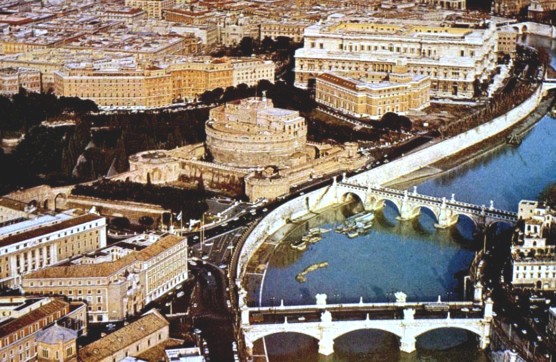
[Italy’s Supreme Court of Cassation is the large structure at right background]
The ANSA news service is reporting today that Dr Galati’s appeal was formally accepted by the Supreme Court on 15 May.
The case has just been assigned to the First Criminal Division of the Supreme Court which is responsible for appeals involving murder. A hearing and outcome which could involve the appeal being punted back to Perugia to be done again properly might be expected in about seven months.
Still no word from Sollecito or Knox or their teams about the exceptionally tough appeal Dr Galati filed against Judge Hellman’s interim verdict releasing them. Our Italian lawyers are surprised that there has been no announcement of any new legal help.
Do the still-accused or their families understand what is about to hit them? Cassation appeals are considered very specialised and certain Rome lawyers make a good living doing nothing but handle them.
Dr Galati was a deputy chief prosecutor at the Supreme Court and would seem to have the Knox and Sollecito teams who are inexperienced at that level thoroughly out-matched. If Knox fails to appear at any appeal trial re-run she would lose the advantage of personalising her own plight with the help of her flash-mob in the court.
In Italy there is enormous suspicion that politics and money played roles in bending the outcome the last time around. The prosecution clearly felt that, and there seems a good chance the full story will not remain hidden.
We also hear that the continued rabid postings of Curt Knox’s hatchetmen are increasingly under the microscope. No sign their campaign does anything but hurt. It sure put real resolve into this appeal.
Saturday, June 02, 2012
Andrea Vogt Reports First-Hand On The Earthquakes That Have Hit Italy’s Economic Epicenter
Posted by Peter Quennell
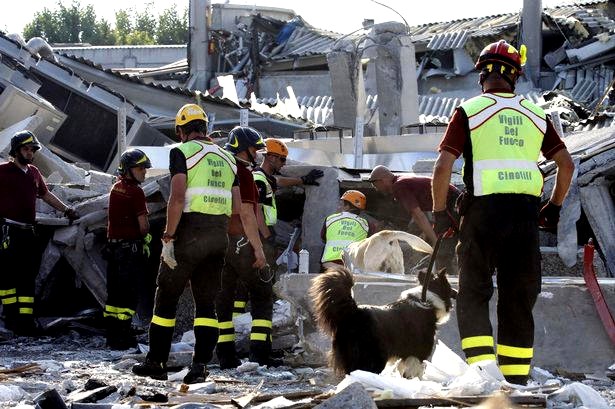
[Images here are by Andrea Vogt and one each Getty Images and NBC.]
Italy’s previous large earthquake in 2009 resulted in 308 deaths around L’Aquila.
A lot of the extensive damage to that town occurred because L’Aquila is an old city (one hour south-east of Perugia) which had not yet been braced or modernised to withstand severe earthquakes.
The two quakes that hit the province of Modena (map at bottom) in the past two weeks resulted in less than two dozen deaths, but in all other respects their damage has been far greater. They were more severe on the Richter scale than the L’Aquila earthquake and tremors were felt all over northern Italy and up into Austria.
And they struck right in Italy’s economic-exports heartland.
Car-makes Maserati, Ferrari and Lamborghini and the mortorcycle maker Ducati are all based right there and all of their plants temporarily had to shut down. Maserati and Ferrari are now owned by FIAT (majority owner of the US’s Dodge-Chrysler) which also saw other assembly plants hit.
Modena also produces cheeses which are heavily exported, and not far away are the plants of the exporters of textile, leather and jewelery fashion goods, of ceramics, of foods other than cheeses, and of Italian wines.
On-the-spot reports by Andrea Vogt with more close-up human detail than most others have appeared on a number of media websites. Excerpts from the report Andrea Vogt filed with Tom Kington which appeared on the Guardian website:
The Italian government said 8,000 people were left homeless, adding to the 6,000 already sleeping in tents and temporary accommodation after the first, 6.0-magnitude quake, which struck the same area in the early hours and killed seven.
The latest quake occurred at 9am when more factories were open ““ causing the higher death toll…. Some of the victims died in factories that had just reopened after suffering damage in the earlier quake.
“I saw dust and smoke coming up from the factories and warehouses on the edge of town,” said Cavezzo resident Maurizio Bruschi. “Many told themselves that the worst was over. But we keep getting hammered.”,,,
The quakes are a serious blow for one of Italy’s most productive regions, just as the country struggles to lift itself out of recession. “Fear will paralyse Emilia now,” wrote Mario Calabresi, editor of the newspaper La Stampa. “Who’s going to be willing to go back to work in a big warehouse now?” he asked…
Convoys of fire brigades and ambulances clogged tiny roads east of Modena, many littered with downed electrical lines and fallen debris. In the tent cities instructions were written in Italian and Arabic for the benefit of migrants working in local factories.
Other residents set up tents in their gardens, or made plans to head to relatives or to the Adriatic coast, where some hotels were opening up rooms to evacuees.”
More below.
From the same report, a story of a priest who was one of those killed by the unexpected double whammy.
In Rovereto sul Secchia a priest, Father Ivan Martini, was killed by a falling beam when his church partially collapsed on him. He was visiting the church, which had been damaged in the earlier quake, to see if he could salvage a statue of the Madonna.
“He was brilliant, and very dedicated, especially to the inmates incarcerated in Modena, where he was the prison chaplain,” said fellow priest Father Carlo Truzzi.
Andrea Vogt also posted a more detailed day-by-day report on her blog the Freelance Desk after combing the stricken areas. Her description below is what happened to the collapsed ceramics plant you can see in the first image below. .
Just a few hundred meters away, workers and curious onlookers came to see what was left of the twisted blue steel of the Sant’ Agostino Ceramics plant. They stared, the silence broken only by the eery sound of ceramic tiles clanking down from high scaffolding into the knot of bent metal. Two workers, Nicola Cavicchi, 35, and Leonardo Ansaloni, 51, died under the rubble as they tried to escape.
When Italy looses, we all really loose. Tough time to now have to pay for re-building.
Tuesday, May 29, 2012
A Second Earthquake Hits Italy One Week Later With Reported 17 Dead
Posted by Peter Quennell
Wednesday, May 09, 2012
Considering The Sad And Sensitive But Also Crucial Subject Of Meredith’s Time Of Death
Posted by James Raper

The following is a discourse on the time of death (TOD) arguments in the case.
These have been summarised but not analysed in depth yet on TJMK. A discussion on the pathology is not really everyone’s cup of tea, but the issue was examined in some detail by Massei and to some extent by Hellmann with somewhat differing conclusions reached.
The topic is relevant because Judge Massei used (inter alia) the expert’s findings to corroborate a TOD being after 11pm, more toward 11.30pm, whereas Judge Hellmann argued an earlier TOD as follows: “it is more consistent”¦.to hypothesize that in fact the attack, and hence the death shortly thereafter, occurred much earlier than the time held by the Court of first instance, certainly not later than 10.13 pm”.
In addition to what is covered by the contents of these two Motivation Reports, there is an argument which is presented by the Friends of Amanda, and in particular Chris Halkides who I understand is, or was, an Associate Professor of Chemistry and Biochemistry at the University of North Carolina. In fact he presents an argument put forward by Professor Introna (Sollecito’s expert) during the trial.
This argument is to do with the standard time for the stomach to empty from the start of a meal, and relating this to the autopsy findings and in particular that of the pathologist Dr Lalli who found that Meredith’s stomach was 500cc full but that there was no material to be found in the duodenum. Halkides’ argument is that this demonstrates conclusively that Meredith was attacked shortly after her return to the cottage at 9pm and would have died shortly thereafter. The significance of this, if correct, is apparent in that it opens up, or at least it raises a doubt as to whether there is or not a verifiable alibi for Knox and Sollecito.
Although Knox does not have an alibi from the time of Meredith’s return home at 9pm, there was human interaction, the last, on Raffaele’s computer at 9.15pm, and one might assume that they were together at that time. But no verifiable alibi until one takes into account that Curatolo says that he first saw the two on Grimana Square around 9.30pm.
My area is the law, and I have no medical or scientific expertise, so I hesitate to go up against anyone who has, but nevertheless I will endeavour to summarise and rationalise the evidence, arguments and conclusions as presented by Massei, Hellmann and Halkides.
First a word about the digestive system.
Food, already masticated, passes through the esophagus to the stomach, where it is broken down by acids, from where it then passes to the small intestine from whence the body extracts the nutrients it needs. The duodenum is that part of the small intestine right next to the stomach and it’s function is to dissolve the food “juice” further with enzymes before passing it on to the rest of the small intestine.
Judge Massei
Judge Massei considers the experts’ findings in the following areas to determine a likely time of death.
The first is temperature decrease, “taking the Henssge nomogram into account: rigor mortis; hypostatic marks” etc.
One can note that in fact rigor mortis and the hypostatic marks were not in the least bit helpful due to the 12 hour delay in the pathologist getting to examine the body.
That apart, nevertheless “¦”¦“These led Dr Lalli to conclude that death may have occurred between 21 hours 30 minutes, and 30 hours and 30 minutes, before the first measurement, and thus between approximately 8 pm on November 1st 2007, and 4am on November 2nd”¦.The intermediate value also indicated by the mathematical reconstruction (26 hours prior to the first measurement) puts the time of death at approximately 11 pm.”
Just how one works out TOD on temperature decrease indicators, especially in the absence of a pathological examination earlier than that which took place here, is pretty technical. I will not attempt to present the data (some of which is missing i.e Meredith’s actual body weight) or explain the mathematical models (so as to calculate body weight and the rate of cooling) (the Henssge nonogram appears to be one such mathematical model in graph form) that the experts used.
Nearly all the experts, other than Professor Introna, whilst having marginal disagreements about data and formulae, were not in fundamental disagreement about the wide parameters of or even Dr Lalli’s conclusion of a TOD of approximately 11pm.
Professor Introna departed from the other experts to use an “ideal weight” and a specific formula to calculate the ideal weight, to produce a TOD of 8.20pm when of course we know that Meredith was still very much alive. Thus Massei ruled out ideal weight calculations as unreliable and used a median weight based on Dr Lalli’s guesstimates of Meredith’s weight (as used by the other experts) on first examination and at autopsy, though she was not actually weighed at all.
The second area is gastric emptying of the stomach.
It was acknowledged by all the experts that there is something like a standard period between the time that food enters the stomach and it then being processed through into the small intestine. There was, however, some disagreement as to the parameters, ranging between 2-3 hours and 3-4 hours. One could therefore say 2-4 hours. Remember this.
Most of the experts agreed though that individuals are different, and there are variables leading to wide discrepancies including the type of meal eaten. A number of the experts heard said that the state of digestion was probably the most unreliable indicator as to the TOD.
All agreed that acute stress, psychological as well as physical such as an attack, would inhibit the digestive process.
I will not rehearse Professor Introna’s argument here as this, essentially, is the argument which Chris Halkides deploys, to which I will come in a moment.
It is fairly clear that Massei found the information as to body cooling time more convincing than information as to the state of digestion. However, as I understood it, the Appeal Court was going to be asked to re-evaluate precisely that. Did it?
Judge Hellmann
The Court of Assizes of first instance has acknowledged the difficulty in precisely fixing the time of death based merely on autopsy criteria. Since not all the accurate data is available, the time span within which the death of Meredith Kercher can be placed based on such criteria remains very widely outlined: between 9pm and 9.30pm of November 1st 2007, and the early hours of November 2nd.However, in reconstructing the sequence of events the Court of first instance assessed it was able to fix the time of death based on other elements, in particular the harrowing scream”¦.
The first point to note here is that Hellmann misinterprets the first Court’s findings. He ignores the fact that the first Court did determine a TOD between 11pm and 11.30 pm as probable based on the pathology alone, and gave reasons for this.
None of the expert testimony is rehearsed, let alone re-evaluated by Hellmann. He proceeds merely to discredit the reliability of the witnesses as to the other elements such as the scream etc.
One recalls that Nara Capezzali says that she heard a scream sometime between 11 and 11.30 pm. That there was a broken down car and the breakdown driver came and went between perhaps 11 and 11.15 pm.
As mentioned earlier his hypothesizing about the other elements leads him to a TOD of not later than 10.13 pm although this time seems a very random one based on what he presents. He talks in this section about Guede’s statement that he arrived at the cottage at 9 pm.
One suspects that if Hellmann could have fixed the time of death at 9.15 pm or 9.30 pm then he would have done so as either time would be a get out of jail free card for Knox and Sollecito. He did not, but he got them out of jail nevertheless with his hypothesizing - here and elsewhere in his report.
I could just stop here because further discussion on the pathology itself would seem irrelevant as regards the appeal to Cassation, though it could really matter at a second appeal trial.
But here is a comment about Chris Halkides because some do say they find his conclusion convincing.
Chris Halkides
My summary of his argument.
The stomach was full (or at least had 500 cc of contents) and the duodenum had no material in it. As the duodenum had no material in it then, Halkides deduces, the stomach had not started to release any part of the meal Meredith had consumed at Robyn Butterworths’ into the small intestine at TOD. Death stops the digestive process.
The contents of the stomach observed by Dr Lalli included some of the apple crumble eaten by Meredith and what appeared to be items, in a very advanced state of acidification, thought to be pizza toppings. Meredith and Sophie had eaten pizza at Robyn Butterworths’ home, followed by the apple crumble. In addition there was a small measure of alcohol in the stomach equivalent to a glass of beer.
They had started eating at about 6pm (some accounts e.g John Follain’s have it earlier at 5.30 pm) or maybe 6.30 pm, putting on a DVD to watch a film and finishing at 8 pm or perhaps 8.30 pm. The times here are an indication if anything and are not to be treated as completely accurate.
If it was 6.30 pm that Meredith began to eat then using the standard parameters discussed by Massei we have latest TODs of 9.30 or 10.30 pm for when material from the stomach should have started to enter the duodenum. Not later and certainly not as late as 11 or 11.30 pm.
That is Halkides’ argument in a nutshell. He argues that TOD is actually about 9.30 pm. If so it would have been impossible for Knox and Sollecito who were still at the flat at 9.15 pm and who were seen in the square at 9.30 pm to have committed the murder.
He has referred me to an article in the Journal of Gastroenterology and Hepatology about an experiment conducted on volunteers where the mean time (for 95 individuals) for gastric emptying of solids is 127 minutes, give or take, I think, twenty minutes either side.
Using the mean, to be pedantic, this would mean that Meredith died before she got home or at the latest immediately on arrival (6.30 + 2 hours 27 minutes = 8.57 pm.)
That article, incidentally, was published in 2006. It doesn’t seem to date that the results have been peer reviewed and verified and I would have thought that the experts who testified at the trial in 2009 would have been aware of it. So the data set out here may be suspect for a given individual and does not take into account variables excluding age, sex and body mass index which the research found to have no significant correlation.
In any event Halkides is quite happy to have a latest parameter of 3 hours, but no longer. Indeed that would be what brings us to 9.30 pm.
The problem I detect with his argument is twofold.
Firstly there is the uncertainty as to when Meredith began to eat at Robyn’s home (and since it was a two course meal, when she began to eat the apple crumble) and secondly Halkides’ argument is predicated on that two course meal being her last.
If the apple crumble was eaten at 8 or 8.30 pm then (adding on the 2 hours 27 minutes from the above research) it may still have been in her stomach at 10.27 or 10,57 pm, or later indeed (which Halkides has to concede) since the digestive time from the research is only an average.
So with a parameter of 3 hours we might just as well say 11 pm or 11.30 pm.
In addition to variables we could take into account inhibitors such as Meredith suffering acute psychological stress commencing”¦well”¦we cannot be certain when, can we?.
One can play Hellmann’s game and hypothesize to our advantage a number of stress situations on that fateful evening, starting quite early. No one has to accept Massei’s hypothesis of a Meredith on her own and in relaxed mode until about 11pm. Massei’s hypothesis here is in no way crucial.
Furthermore the hypothesis that Meredith actually ate a further snack on her return to the cottage does seem to have some basis in fact in that at the autopsy the pathologist found a mushroom in her esophagus. Mushrooms specifically had not been a topping on the pizzas baked at Robyn’s home. As to the alcohol in her stomach no alcohol had been consumed at Robyn’s home, only water.
It might sound a bit flippant for me to suggest it but it might be the case that Meredith, who was passionate about pizzas, had a beer and grilled a quick meal of pizza toppings from the fridge for herself which Halkides mistakes for evidence of the pizza still in the stomach.
That Meredith might still have been hungry might be because she had not, until eating at Robyn’s, eaten for a considerable time beforehand.
She had been partying all night Halloween and had gone to bed at about 4 am, rising at about midday, and then leaving not so long afterwards to be with her friends. Whether she had anything to eat at the cottage before leaving on the afternoon of the 1st, we simply don’t know.
Knox tells us in her e-mail to Seattle that she and Raffaele cooked and ate there, but she does not mention Meredith having anything to eat, and Meredith left before they did.
For some reason John Follain thinks Meredith did eat then, Paul Russell that she did not. I do not see how either could be sure. If it had been me I might have felt up to a nibble but not much more knowing that in a few hours I would be eating a meal with my friends.
It seems to me that it is quite possible that Robyn’s pizza had passed through the stomach, duodenum, and indeed perhaps most of if not the rest of the small intestine by 11.30 pm and that the apple crumble had not even begun to enter the duodenum.
Let us assume that Meredith actually started her pizza at 5.30 pm (according to Follain) finishing at 5.40 pm. As she was already hungry the stomach acids go to work straight away and the pizza passes at the earliest to the duodenum after two hours, spending a further three and half hours (as per literature) in the small intestine before passing to the rectum . A total of five and a half hours.
Thus the small intestine had disposed of it by 11.10 pm. There would however be an unlikely gap to the consumption of the apple crumble. Yet if the apple crumble was consumed after the DVD (watching the film The Notebook circa 123 minutes) then that would be around 8 pm, entering the duodenum three and a half hours later (possible) at 11.30 pm or at least it would be doing this but for the fact that Meredith was already the subject of a vicious attack inhibiting the digestive process.
I accept that I am not using uniform digestion times in this speculation (indeed I have deployed earliest and latest parameters at will) but nevertheless they are within the parameters accepted by the experts, and even, at a push, by Halkides as well.
The point is that this is a complicated topic and there are many imprecise details that do not allow for certainty but only probablilities, or in some instances, possibilities. This Massei, and to a certain extent Hellmann recognized.
Nobody can be precisely sure and so any other timeline or alibi must stand or fall on their own.
An Associate Of Knox PR Heavy David Marriot Has Been Bullying Meredith’s Father Online
Posted by Glinda The Good
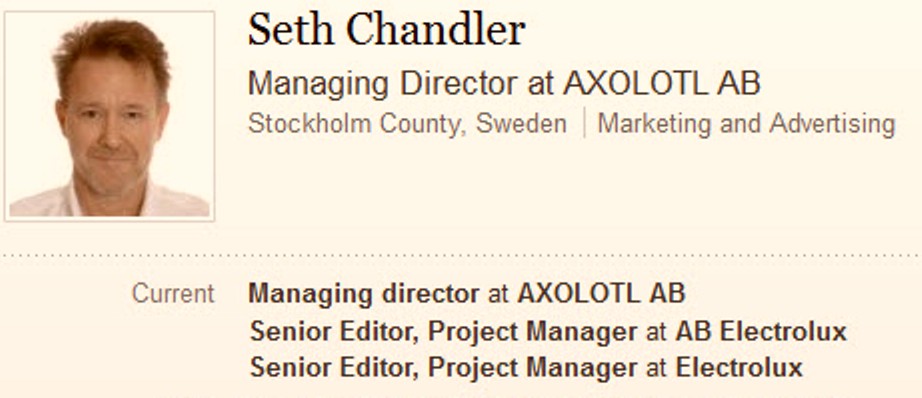
Yet another example of Curt Knox’s abusive public relations campaign at work.
We have long heard that the PR run for Curt Knox by David Marriott in Seattle controls all the pro-Knox anti-Italy message everywhere. David Marriott unwisely claimed this, in fact, right after Amanda Knox returned to Seattle. See here.
The PR is said to abuse reporters who dont go along, reward those that do, and fan out nasty commenters around the web to post selling points under various false names. It presumably does that to make the movement look spontaneous and big. An expanding but questionable technique which goes by the name astroturfing.
Every month more evidence piles up, suggesting that online comment threads and forums are being hijacked by people who aren’t what they seem.
The anonymity of the web gives companies and governments golden opportunities to run astroturf operations: fake grassroots campaigns that create the impression that large numbers of people are demanding or opposing particular policies. This deception is most likely to occur where the interests of companies or governments come into conflict with the interests of the public. For example, there’s a long history of tobacco companies creating astroturf groups to fight attempts to regulate them.
After I wrote about online astroturfing in December, I was contacted by a whistleblower. He was part of a commercial team employed to infest internet forums and comment threads on behalf of corporate clients, promoting their causes and arguing with anyone who opposed them.
Like the other members of the team, he posed as a disinterested member of the public. Or, to be more accurate, as a crowd of disinterested members of the public: he used 70 personas, both to avoid detection and to create the impression there was widespread support for his pro-corporate arguments. I’ll reveal more about what he told me when I’ve finished the investigation I’m working on.
The Knox PR astroturfing operation now has Meredith’s father John Kercher and his fine new book in its crosshairs, and for some days it has been raining contemptuous abuse. .
Officialdom in Perugia and Rome and the Italian Supreme Court all seem to know that the Knox-Mellases KNEW Amanda Knox was involved in the crime against Meredith almost as soon as they arrived in Perugia, and that they have been trying to cover that up ever since.
The PR scheme had already swung into operation by then, but the Knox-Mellases made the fateful choice to stick with it regardless, instead of maybe more wisely switching off the PR and turning to a good American lawyer to spread the word instead. Curt Knox recently claimed, before Amanda’s “innocent” persona started to implode, that using PR was one of the best choices he ever made.
This image above is of Seth Chandler, the managing director of Axolotl AB, a public relations firm linked to David Marriott’s which does the usual advertising, copy doctoring, social media campaigning, and so on. The image was captured online before it was hurriedly disappeared.
Seth appears to be the same chap caught red-handed the other day propagating the all-too-familiar FOA selling points while sliming the family of Meredith, who is the real victim here. Under an article on Worldcrunch which reported the imminent release of John Kercher’s book “Meredith” Seth Chandler was observed repeatedly posting that John Kercher (and others there trying to explain the truth) should simply STFU..
With only a couple of exceptions, real names of identifiable people are not used by the PR. We’ve seen them, we’ve read them, but this appears to be only the second time (after “Bruce Fisher of New York”) that one of the anonymous PR operatives/contractors has been exposed for what and where he is. Perhaps we might expect a few more.
For four years in the US and the UK, with big money at stake, the operatives have bashed Italy, the Italian justice system, Italian culture, and the Italian law enforcement agencies involved in the case. The operatives have slimed the Scientific Police, the prosecutor Mr Mignini, the prosecutor Ms Comodi, the British press, the Italian press, the Kerchers’ lawyer Mr Maresca, and all the prosecution witnesses. In various postings they have accused many of these people of crimes, an imprisonable felony in the US.
They have bashed the lay judges in the court because they wear their tricolour sashes routinely as a badge of office. They have claimed that this is an anti-American display. They have decried the Italian courtroom because behind the lead judge a crucifix hangs there.
The operatives have thrown mud at anyone they perceive as dangerously surfacing any hard truth about the case. Respected journalists have received exceptional abuse. Any perceived enemy not so much of Amanda Knox herself as the defense narrative of the murder and the legal processes can expect to get roughed up.
So it’s quite a game-changer when Seth Chandler, or “Seth C” as he now wants to be known, the managing director of Axolotl PR, is apparently caught red-handed telling John Kercher to STFU. Seth Chandler has claimed as he tried to wriggle off the hook that “no one paid” him to say STFU, and that anyway PRs would never say such a thing. Really? But the abuse was right there in his name.
Seth Chandler also works for Electrolux. Its competitors are are Dyson, and LG. I wouldn’t imagine that he employs the same tactics for firms, though I haven’t yet checked his Amazon customer reviews.
Shame on Seth Chandler - and on Curt Knox, whose vile temper reverberates throughout this case and some increasingly believe sent Amanda Knox over the top.
Friday, May 04, 2012
A Mischievous Defense-Inspired Global Hoax - To Deflect From Some Bad News?
Posted by Our Main Posters
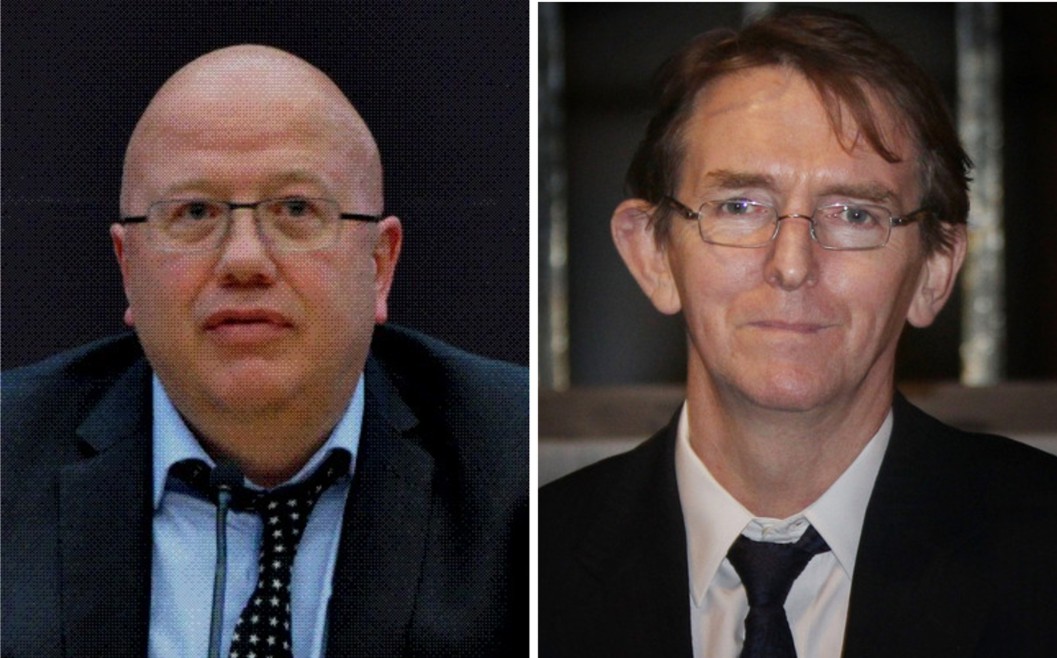
[Left, editor Chris Blackhurst of the Independent, right, editor Tony Gallagher of the Daily Telegraph]
1. Examine first some key happenings at the Knox/Sollecito trial
Throughout the trial which began back in January 2009 the defense teams often seemed down or depressed or distracted or floundering.
Reports surfaced in Italy that one or two of them might even have considered walking. Knox defense counsel Luciano Ghirga was reported as nodding off or distracted. Sollecito defense counsel Giulia Bongiorno was photographed seemingly showing some exasperation with Sollecito and at zero notice she missed several days in court.
Amanda Knox’s testimony over two days on the stand in June 2009 was widely seen in Italy as a disaster. From then on many in the court and throughout Italy believed this seemingly callous, evasive, forgetful girl had to have had a role in Meredith’s death.
Having failed to attend to observe any of the key forensic tests at the Scientific Police labs in Rome, the defenses were able to introduce some forensic witnesses who testified that there might, possibly, somehow, be contamination in the collection and tests which they chose not to witness, but they never came close to showing how.
By the summations in November 2009 both defenses seemed to be seriously floundering.
2. Fast forward to Friday 20 November 2009
What happened on 20 November might well have made it the defenses’ very worst day.
On that day during their summation the prosecution BEHIND CLOSED DOORS devoted an entire day to reconstructing how Meredith died and the events in the few hours before and since.
The presentation was closed because Judge Massei had ruled in favor of Meredith’s family to close the court to the media when any upsetting material was being presented. For example the results of the autopsy had been presented in closed court.
This resulted in the Massei judges and jury receiving a much more disturbing picture than the Italian public and especially the foreign publics ever did.
The Italian media pieced together what had been presented behind the closed doors on 20 November and Il Messagero and several other Italian newspapers published it several days later. You can read a combined summary in this post here.
To our knowledge none of that summary of events ever appeared in the US or UK media, so the full impact of the reconstruction felt by the jury and to a lesser extent by the Italian public was never felt at all by the US or UK publics.
This excerpt is from that post:
We have left out the depiction of the final struggle with Meredith, which is extremely sad and disturbing. In the evidence phase this was testified-to behind closed doors at her family’s request and we have never posted anything from those sessions….
23:21 - Amanda and Raffaele go into Meredith’s bedroom, while Rudy goes into the bathroom.
23:25 - A scuffle begins between Amanda, helped by Raffaele, and Meredith. The English girl is taken by the neck, then banged against a cupboard. Rudy Guede enters and joins in.
23:30 - 23:45 Depiction in the timeline and computer simulation of a horrific struggle with Meredith
23:50 - Amanda and Raffaele take Meredith’s mobile phones and they leave the apartment. Guede goes into the bathroom to get several towels to staunch the blood, then puts a cushion under Meredith’s head.
That simulation video was a second-by-second depiction of what the crime-scene specialists from the Scientific Police in Rome had concluded, from the position of Meredith’s body in the room, evidence traces and the placing of various objects, and the many wounds described in the autopsy.
It was extremely difficult and laborious to get just right, and every tiny movement of the four that it depicts in three-dimensional space had to be able to stand up unchallenged - as they did.
The fight with Meredith took a horrific fifteen minutes. It only ended when she was lying bleeding on the floor, her hands grasping her neck. She was locked in her room to die, with her keys and phones removed to make sure she could not save her own life.
This was not a minute or two of hazing and a slipped knife. The evident intention was to see her dead - and in the reconstruction it required THREE ATTACKERS to explain all the evidence points.
The prosecution never entered the video into evidence so it could not be leaked to the public (the Sollecito family already stood accused of leaking one video) but the effect on the jury seems to have been profound and the defenses could do nothing to blunt it.
The lone wolf theory was well and truly dead in that courtroom and a perception of three attackers was well and truly alive. The defenses did what they could in their summations but they were unable to shake the perception of a depraved three-against-one attack.
A few days later a verdict was announced. By a UNANIMOUS verdict Sollecito and Knox were found guilty.
3. Fast forward to the first-level appeal before Judge Hellman in 20011
Judge Sergio Matteini Chiari, the most senior judge in the criminal division, was appointed to preside over the appeal.
He was very experienced at presiding over murder trials and appeals. What happened next surprised many among the judges and prosecutors and Italian reporters and the Italian public generally. From the Italian Wikipedia:
Although the Assize Court of Appeal was to be chaired by Dr. Sergio Matteini Chiari, Chairman of the Criminal Division of the Court of Appeal in Perugia, in circumstances not well understood Dr. Claudio Pratillo Hellmann, who chairs the Labor Chamber of the Court, has been called on to preside over the appeal court,
The judge to the side of the main judge, Dr. Massimo Zanetti, came from the Civil Section, and both had had limited experience with criminal trials both rather remote in time (only the cases of Spoleto and Orvieto).
Judge Hellman readily consented to the defense requests. First to re-examine several witnesses previously heard on the stand during trial (primarily Mr Curatolo) and two new ones (Alessi and Aviello) intended to show that Guede or Aviello’s missing brother could have attacked Meredith with unknown others.
And second to appoint two independent experts who would re-examine the DNA on the large knife found in Sollecito’s apartment and the DNA for which traces were collected in Meredith’s room and the methods used for processing them.
The examination of the witnesses seemed to end indecisively, but the vague suggestions of the independent consultants that there COULD have been DNA contamination - never proven - was accepted readily by Judge Hellman.
The reconstruction and the showing of the simulation which the trial jury sat through in later 2009 was not repeated by the prosecution at the first appeal in late 2011. Judge Hellman showed no inclination to sit through the full depiction of the day or the horrific 15-minute attack on Meredith.
So the explanation of all the evidence points in the room and on Meredith’s body was never solidly brought home solidly to Judge Hellman or his jury. In his verdict he overturned the outcome of the first trial, provisionally pending any Supreme Court ratification, and he handed Amanda Knox a three-year sentence for framing Patrick Lumumba.
Having refused to see the reconstruction, he could very torturously argue that the attack on Meredith could have been carried out by a single person. If he and his jury had actually watched the video, they could never have argued that.
4. Fast-forward to the grounds of Dr Galati’s appeal to the Supreme Court
The Umbria Chief Prosecutor’s grounds for appeal were spelt out by him at a new conference in Perugia on Monday 13 February 2012. The PMF translation team will soon have the full document ready in English.
The summary of the grounds for appeal below is translated from the Umbria24 report and to our knowledge NO English-language website except this one and PMF has ever reported what are the full grounds.
Meredith case: the prosecution appeals to Cassation: the acquittal verdict should be “nullified”.
For the Chief Magistrates of the [Umbria] Prosecution, “it was almost exclusively the defence arguments which were taken heed of”
By Francesca Marruco
The first-level conviction verdict was “complete and thorough” while the verdict of the second-level is “contradictory and illogical”. For this reason, the General Prosecution of Perugia asks the Cassation to revoke or invalidate it.
“We are still extremely convinced that Amanda and Raffaele are co-perpetrators of the murder of Meredith Kercher” said the Chief Prosecutor of Perugia, Giovanni Galati and the Deputy Chief Prosecutor, Giancarlo Costagliola.
Verdict that should be revoked “The second-level verdict should be annulled/revoked…. There are precise reasons for revoking it”, Mr Galati went on to say. In the Hellman reasoning report on the verdict with which the second-level judges acquitted the ex-boyfriend and girlfriend “there are so many errors, and many omissions. There is inconsistency in the grounds for judgement, which brings us to nothing.”
“It is as if they had ruled ex novo [anew] on Meredith’s murder” added the Deputy Prosecutor, Giancarlo Costagliola, “basing their decision solely on the arguments of the defence.”
“Normally the appeal judge evaluates the reasoning procedure of the first-instance judge and compares it to new elements. But this one missed that out altogether: there is no comparison between the checks carried out in the first and second instances. Only what was carried out during the appeal was evaluated.”
Only defence arguments were taken heed of For the magistrates, in fact, the second-level judges “took heed, almost exclusively, of the arguments of the defence consultants or the reconstruction hypotheses that were largely to the benefit of the defense theses”.
The prosecutors who authored the appeal [to Cassation] also criticized the “method used”. “The first-instance verdict”, they wrote, “was summarized in just a few lines”,
“The verdict [which we] challenge completely ignored all the other aspects which corresponded with the accusation’s hypothesis, all the aspects which, on the contrary - as was seen in the reasoning report of the first-instance verdict - had been rigorously pointed out and considered by the Assizes Court [trial court] in its decision.”
“In examining the individual [items of] evidence, the challenged sentence has fallen into consistent procedural error in the weaknesses and evident illogicality of the grounds for its decision.”
Prejudice For the General Prosecution magistrates, the second-level [first appeal] judges appear to have shown “a sort of prejudice” with the “infelicitous preamble of the judge [the author], who is supposed to be impartial”, when he declared that “nothing is certain except the death of Meredith Kercher”, which to the others [Mr Galati and Mr Costagliola] is nothing more than “a resounding preview/forecast of the judgement” and a “disconcerting” affirmation.
The ten points The reasons for the appeal to Cassation which Perugia’s General Prosecution presented today against the acquittal verdict of Amanda and Raffaele are based on ten points of the second-level verdict.The first is the lack of grounds for the decision, in the decree of 18 December 2010, to allow the forensic testimony/expert witness in the appeal judgement.
The second, in contrast, concerns a contrary decision: the decision to not allow a new forensic investigation requested by the prosecution at the end of the ruling discussion. In the appeal to Cassation it is written that the Appeal Court’s rejection reveals “contradictoriness/contrariness and demonstrates manifest illogicality in the grounds for the judgement/reasoning report”.
The other points deal with the decision by the Appeal court of Assizes of Perugia to not hear the witness Aviello, also the definition of “unreliable” [in the Hellman Report] with reference to the witnesses Roberto Quintavalle and Antonio Curatolo, also the time of death of Meredith Kercher, also on the genetic investigations.
As well as the analyses of the prints and other traces, also the presence of Amanda and Sollecito in via della Pergola, also the simulation of a crime [the staged break-in], and also the exclusion of the aggravating circumstance of the crime of “calumny”.
Missing assumption/acceptance of decisive evidence In the appeal to Cassation there is also mention of the “missing assumption/acceptance of a decisive proof”
In other words, of that proof [presented at trial court] which consisted of “the carrying out of the genetic analysis on the sample taken from the knife by the experts appointed by the Court during the appeal judgement, who did not carry out the analyses of that sample, thus violating a specific request contained in the [orders given to them] when they were assigned to the expert-witness post”
“In the second-level [Hellman] verdict”, the magistrates said, “the judges sought to refer to this in their own way, by speaking of an “experimental method” by which these tests/checks could be carried out.
But this is not the case”, said Deputy Chief Prosecutor Giancarlo Costagliola: “Dr Novelli [the prosecution’s DNA consultant at appeal] spoke of cutting-edge technology, not of experimental methods”.
So Dr Galati, himself formerly a deputy chief prosecutor at the Supreme Court who for years handled nothing but Supreme Court cases and knows what constitutes a sound appeal argument, argued that Judge Hellman had made ten serious mistakes. (Aviello claimed in court that he had been bribed; instead of investigating, Judge Hellman very quickly move on.)
But even worse, that Judge Hellman had illegally vastly expanded the scope of the appeal. And he had illegally appointed the independent DNA experts.
Because of Hellman’s alleged sloppiness and overreach, the defenses now stood to lose EVERYTHING they thought they had gained - and had been so noisily jubilant about, especially to the media in the US. An arrogance not taken kindly to in Italy at all.
5. Fast forward to English language press reports of the past few days.
Nick Squires may have been the first to carry the report quoting unnamed sources in the Daily Telegraph.
Two prosecutors in Perugia, where Miss Kercher was murdered, face accusations of wasting 182,000 euros (£150,000) of public money by commissioning a controversial 3D video which purported to show how the murder unfolded.
The contentious video, which defence lawyers said was based on circumstantial evidence, showed Miss Kercher being held down and stabbed to death by Miss Knox and her two co-accused.
The Leeds University student and her alleged murderers were represented in the 20 minute film by animated ‘avatars’. It was played on a big screen to the judge and jury in the original trial in 2009.
The National Audit Office is now investigating the prosecutors, Giuliano Mignini and his deputy, Manuela Comodi, on whether the video was a necessary part of their case.
If found culpable they could have to pay the money back to the prosecutors’ office.
Really? Accusations? Wasting? Controversial? Purported? Contentious? Now investigating?
Note that Nick Squires didnt name his sources. He didnt explain why he claimed the video simulation was controversial. (It wasn’t at all controversial at trial in 2009.) He didnt seem to know who had made the accusations or how or when they had been made or to who.
He failed to mention that the video was played behind closed doors, and that the defenses had no comeback to it. He said it depicted Knox, though in fact it deliberately didn’t. He didn’t explain that the depiction of the fight lasted 15 minutes. He didn’t explain that the depiction of three attackers was overwhelmingly convincing to Judge Massei and his jury.
Nick Squires’s report was nevertheless comparatively brief and restrained in contrast to that of Michael Day which came next. His very much embroidered version was published in the UK Independent. The accusatory tone and serious charges in Nick Squires’s and Michael Day’s reports were then picked up without checking by a large number of American and European media outlets.
See the reports here and here and here and here and here and here and here .
Note that not one of these reports was checked out in Italy, and that all these reports slam Mr Mignini (yet again) and indicate that this was an OFFICIAL accusation of “wasting public funds”. Many US reports wrongly state that the British audit office is investigating.
Michael Day claimed that “Agostino Chiappiniello has said he suspects the two of inappropriately spending €182,000 (£148,000) on a crude and cartoonish 20-minute video,”
Really? Agostino Chiappiniello, did you tell Michael Day precisely that?
Michael Day then states that “In both trials [Mr Mignini’s ] interventions were notable for the outlandish motivations and personality traits he attributed to the defendants. He promoted the idea that the murder was the result of a sex-game that got out of control, despite having little or no evidence to support the theory.”
Really? Actually Guede and Knox and Sollecito were all CONVICTED of a sex crime at trial, because to their judges and juries that is what the evidence inescapably pointed to.
And Michael Day concludes with yet another misleading statement (see above on Dr Galati’s appeal for the correct facts which he seriously garbles here.):
Judges at the Cassation court may only overturn the first-appeal verdict on technical grounds. Thus, no new evidence may be introduced and the prosecution’s room for manoeuvre is limited. The pair could not be retried for the same crimes.
Really? But nobody is talking about the pair being retried for the same crimes. This does not arise. Under Italian law they STILL stand accused of the same crimes as they were before trial back in 2009 until the Supreme Court signs off on their case.
6. Fast-forward to the ITALIAN reports of the past two days
Translation by our main poster Jools from an Umbria24 report, posted on Wednesday, which tells a very different story.
[There was several months ago]”¦ a complaint from “a group of private citizens” who did not sign their names and surnames about an alleged misuse of public money….
No comment from the two prosecutors of Perugia, no comment on this news.
As we have learned the prosecutors have not received any legal papers regarding the investigation and they heard of the news from the press.
Who will pay? To decide if the expense was adequate for the State coffers will be the task of the prosecutor at the Court of Audits of Umbria.
Meanwhile if the Supreme Court were to overturn the judgment of the Perugia appellate court, the costs would be paid by the two accused [Knox and Sollecito].
If instead the Supreme Court were to confirm the acquittal, the bill for 182 thousand euros would be borne by the Italian State.
7. In summation
Quite a fizzle. The prosecutors are NOT quaking in their boots. They didnt even know about it. And the full force of Italian justice does NOT have them under the microscope.
- The anonymous complaint was filed over two months ago. Nick Squires and Michael Day sure did not make that clear.
- If the enquiry is actually pursued (not at all certain) then it is Amanda Knox and Raffaele Sollecito who could in fact be stuck for the costs (plus VAT) of producing the video. Nick Squires and Michael Day sure did not make that clear.
- The Corte dei Conti is not the equivalent of a criminal or civic court, it is essentially an investigating tribunal. Nick Squires and Michael Day sure did not make that clear.
- The Corte dei Conti has so far not accused anyone of anything, and it may never do so. It sure doesn’t seem to regard the matter as urgent. Nick Squires and Michael Day sure did not make that clear.
- In fact it has taken over two months to, well… not even assemble the evidence or bother to get in touch with Mr Mignini or Ms Comodi. Nick Squires and Michael Day sure did not make that clear.
On the same basis Judge Hellman could in theory be accused of incurring TWO huge cost over-runs.
- One for running his appeal court only on saturdays to suit just one defense lawyer, when the overtime costs to Italy became huge - substantially more than the cost of the video. Nick Squires and Michael Day sure did not make that clear.
- And one for (according to Dr Galati) illegally appointing the two DNA consultants - the costs of that investigation to Italy became much more than the cost of the video. Nick Squires and Michael Day sure did not make that clear.
The reconstruction video is so powerful and accurate that it could, if it is watched by the Supreme Court in Rome or a new appeal court in Perugia, be quite devastating to the defense of the two accused. This is because it depicts the full cruelty of the attack on Meredith - and it shows that THREE people had to have attacked her.
So who filed the anonymous complaint against Mr Mignini and Ms Comodi? And who used Nick Squires and Michael Day as puppets to make a private claim look official, and make that hoax go viral? We are sure Dr Galati will have all the answers before many days go past. Calunnia charges might apply.
Someone must REALLY fear that Sollecito and Knox will be cooked if that video reconstruction ever gets shown again. Case closed? At one stroke.
[Below: Knox and Sollecito, who could be billed over $300,000 for the reconstruction video]
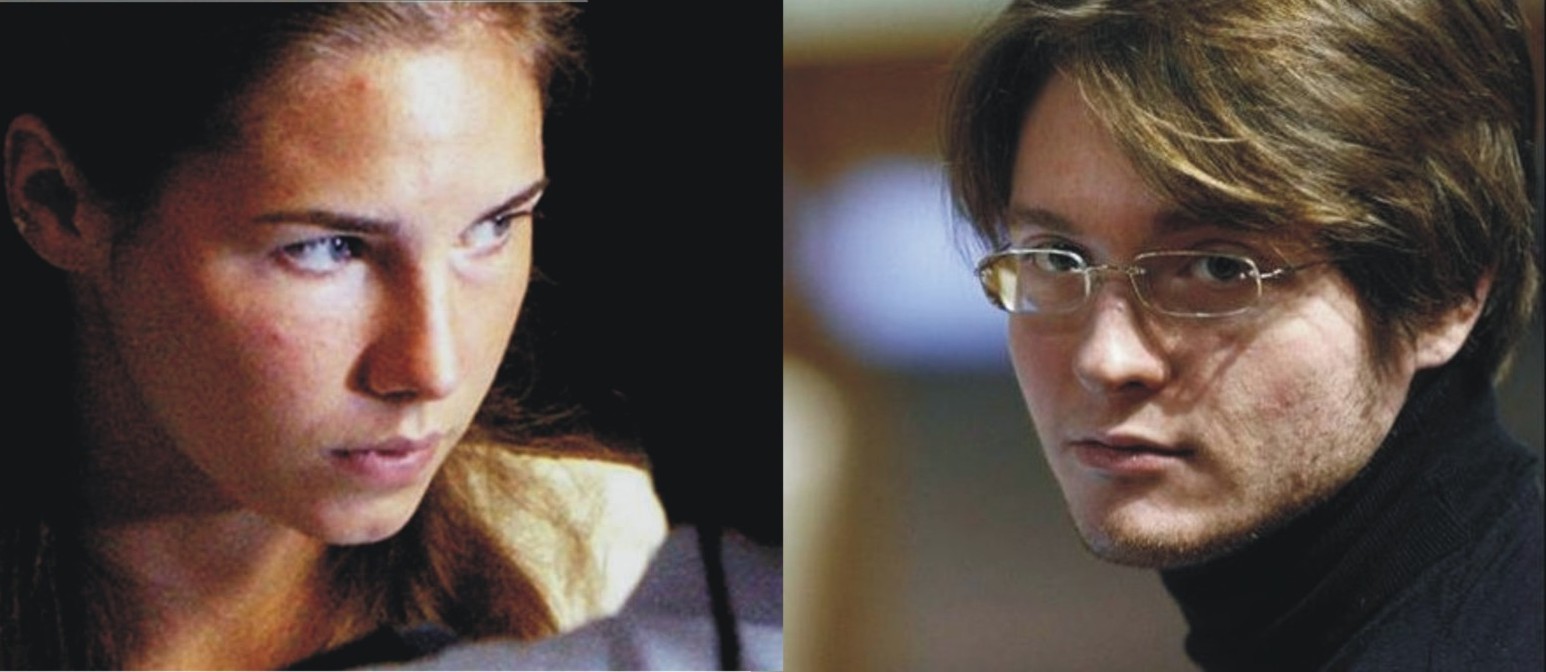
Monday, April 30, 2012
Does ANY Competent Lawyer Believe RS And AK Are 100% Innocent? If So See These Questions
Posted by James Raper
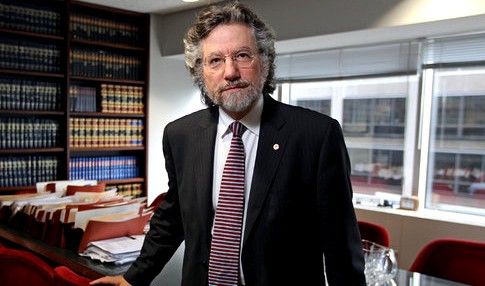
[Above: Knox defense legal advisor Ted Simon increasingly seems to have some explaining to do]
After 3 days and growing, unfortunately no sign that pro-innocence lawyers (if any) want to respond. Mr Simon? Mr Barnett? Ms Nancy Grace? (Well perhaps not you)
The Italian, US and UK lawyers who guide TJMK (of which I am one) look around and wonder: why are genuinely-convinced pro-Knox lawyers (if any) still not comprehensively answering all the open questions?
I contrast this with the various media talking heads who have offered drive-by comments without a really deep understanding of the facts of the case or Italian law.
In the law of all three countries, defense lawyers don’t need to KNOW either way whether their client is guilty or innocent. They don’t have to come out with a complete scenario to account for all the facts and point to innocence that would be the counterpart to my scenario (powerpoints - wait a few seconds to load) seemingly accounting for all the facts, which is still an unchallenged case for guilt.
But a comprehensive rebuttal would do the hard-pressed Sollecito and Knox factions a big favor, and provide a much-needed framework for the media (which is posting many incorrect legal claims), and make the Cassation appeal and the book-writing by Knox and Sollecito so much easier.
Consider the ups-and-downs of the defense legal teams on the case,
It was clear in 2008 that her lawyers absolutely didnt like Knox speaking out, offering different versions that between them made her look distinctly guilty. They didnt like the anti-Mignini campaign run from Seattle and they publicly said so - when Mr Mignini was attacked by a main speaker at an event at Salty’s they actually spoke up and publicly defended him.
In December 2008 NBC TV aired an excellent Dateline report. The main legal talking head, Ted Simon, explained that this was a really tough prosecution case to beat, and that whacking down individual points of evidence would not win the case in the public eye (justice would not be seen to be done) and that only a complete alternative explanation of the crime would do.
At trial in 2009 the defense teams did what they could with a torrent of facts and two unpredictable clients. The cross-examination of Amanda Knox on the stand mid-year in the context of Patrick Lumumba’s alleged framing must have seemed a real low-point for them, as she came across as rather flippant and chilling, and she said a number of things that all defense lawyers would probably prefer that she hadn’t.
Through the publication of Judge Massei’s report the defenses seem to have been faced with an uphill battle.
In 2011 an experienced criminal-case judge was initially appointed to preside over the first appeal. But quite suddenly, to the surprise of many in Italy and the alleged unhappiness of the judge himself, he was removed from the case, and Judge Hellman was appointed in his place.
Defence counsel would of course have had no role in that surprise change of lead judges for the first appeal, but from Day One of the appeal (spaced out to one session a week by Judge Hellman to suit one of them) the defenses seemed much happier.
The prosecution were now on occasion publicly hinting that they were now stuck with the uphill battle. The defenses now seemed the side energized and confident. But please note these three things which suggest that they knew they were not all-powerful.
- 1) They appealed on very narrow grounds, essentially on some witness testimony and a small part of the forensic evidence, and they kept well away from the multiple alibis, mobile phones and computers, and forensic evidence in the hallway, bathroom, and Filomena’s room.
2) They never argued that Rudy Guede was the lone-wolf killer in the case (the surprise preference in his report of Judge Hellman) and even put their own witnesses Alessi and Aviello on the stand to in effect try to prove otherwise.
3) Knox legal advisor Ted Simon was reduced to arguing on TV that there was no evidence of Knox and Sollecito IN the bedroom, while never accounting for the mishmash of alibis or all the mixed-blood and footprint evidence just outside the door.
As Dr Galati’s appeal and public opinion in the three countries are showing, the defences may have mostly won the second battle, with Judge Hellman’s interim verdict and sentence (Knox was still sentenced to three years), but they seem to be falling far short of winning the war for the two clients.
Now the defences again face an uphill battle.
So here we go. An opportunity for any good pro-innocence lawyer to help to win the war for Knox and Sollecito. Forget the forensics for now. I offer these several dozen questions for you and/or Amanda Knox which, truthfully answered, might put many concerns to bed.
I will be happy to post here any real attempt at answering all of these questions by any qualified lawyer who is thoroughly on top of the case - or of course any attempt by Amanda Knox herself.
1. Why did you not mention the 16 second 12.07 phonecall to Meredith’s English phone on the 2nd November in your e-mail? When explaining why you made this call, please also explain why it was to the English phone rather than Meredith’s Italian phone which you knew Meredith used for local calls?
2. Why did you not mention this call when you phoned Filomena immediately afterwards?
3. Why did you make so little effort to contact Meredith again after being told by Filomena to do so. Remember the logged 3 and 4 second phone calls?
4. Why did you tell Filomena that you had already phoned the police when neither you, nor Raffaele, had.
5. Can you and will you explain the contradiction between your panic at the cottage (as described in the e-mail) and the testimony of all the witnesses who subsequently arrived that you appeared calm, detached and initially unconcerned as to your friend’s whereabouts or safety?
6. Why did you tell the postal police that Meredith often locked her bedroom door, even when it came to taking a shower, when this was simply not true, as Filomena testified?
7. Can you and will you explain why you did not try either of Meredith’s phones at the cottage if you were indeed in such a panic about Meredith’s locked door?
8. Can you and will you explain how you knew that Meredith’s throat had been cut when you were not, according to the witnesses’s testimony, a witness to the scene in Meredith’s bedroom after the door had been kicked in and, with the exception of probably a postal police officer or the ambulance crew, no one had looked underneath the duvet covering the body when you were there?
9. What made you think that the body was in the cupboard (wardrobe) when it was in fact to the side of the wardrobe? Were you being flippant, stupid, or what, when you said that? Do you think it just a remarkable coincidence that the remark bears close comparison to the crime scene investigators conclusions, based on the blood at the scene, that Meredith had been shoved, on all fours, and head first, at the door of the wardrobe? She was then turned over on the floor and moved again. How did you know that there was any position prior to her final place of rest?
10. Will you ever be able to account for the 12.47 pm call to your mother in Seattle ( at 4.45 am Seattle time)? Do you remember this now because it was not mentioned in your e-mail nor were you able to remember it in your court testimony?
11. Why do you think Raffaele told the police ““ contrary to your own alibi that you had spent the whole time with Raffaele at his apartment ““ that you had gone out at 9 pm and did not return until 1 am?
12. Did you sleep through the music played for half an hour on Raffaele’s computer from 5.32 am?
13. Were you telling the truth when you told the court that you and Raffaele ate dinner some time between 9.15 and 11 pm? Can you not narrow it down a bit more? The water leak occurred, you said, whilst washing up dishes after dinner. Why then did Raffaele’s father say that Raffaele told him at 8.42 pm about the water leak whilst washing up dishes?
14. What was the problem about using the mop, rags, sponges etc already at Raffaele’s apartment, to clear up a water spill? Why was the mop from the girl’s cottage so essential and if it was, why not collect it immediately since it was just a short distance away?
15. Why, when you knew that you were going to Gubbio with Raffaele on the 2nd November, did you not take a change of clothing with you, if needed, when you left the cottage on the afternoon of the 1st?
16. Why did you need a shower at the cottage when you had already had one at Raffaele’s apartment the previous evening?
17. If you had needed one again why not have it at his apartment, in a heated apartment, before you set off, or on your return, rather than have a shower on a cold day, in a cold flat?
18. Why did you not notice the blood in the bathroom, and the bloody footprint on the bathmat, until after your shower? If the blood you then observed was already diluted and faded, how do you explain this?
19. Do not ignore your blood on the faucet. In your own testimony you said that there was no blood in the bathroom when you and Raffaele left the flat on the afternoon of the 1st. What is your considered take on this now? Did your ear piercings bleed when having that shower or drying afterwards? If so, why were you not perfectly clear about the matter in your e-mail? But then again you said that the blood was caked dry, didn’t you?
20. Why did Raffaele say that, on entering the flat with you, Filomena’s door was open and he saw the damage and mess inside, but you said, in your e-mail, that Filomena’s door was closed when you returned at 10.30 am? Did you subsequently look inside on that occasion, or not? It’s just that if you did, then why did you not mention the break in to Filomena prior to you and Raffaele returning to the cottage?
21. You are a creative writer so please explain. What is the point of the word “also” in the following extract from your e-mail? “Laura’s door was open which meant that she wasn’t at home, and Filomena’s door was also closed”.
22. In your trial testimony you mentioned shuffling along the corridor on the bathroom mat after your shower. From the bathroom to your room. Because there was no towel in the bathroom. You had left it in your bedroom. Then back again. Why is this not mentioned in your e-mail?
23. In your e-mail you stated that you changed for your shower in your bedroom, and then afterwards dressed in your bedroom. That makes sense. What you don’t explain is why, if you towelled and dressed in your bedroom, there was any need to shuffle back to the bathroom on the bathmat. Why not just carry it back?
24. But why, in the same testimony, did you then change your mind as to where you had undressed for your shower? Not in your bedroom - saying so was a mistake you said - but you did not say where. Some people might think, uncharitably, that your change of mind was necessary to incorporate the double bathmat shuffle.
25. Were there any things that you disliked about Meredith? Be honest because we know from her English friends and other sources that there were things that she disliked about you.
26. Why are pages missing from your diary for October?
27. Once again, and this time so that it makes some sense, please explain why you permitted the police, on your say so, to believe that poor Patrick Lumumba was involved in Meredith’s murder. Clearly, had you been at the cottage you would have known that he was not, and had you not been there you could not have known that he was.
There are actually over 200 open questions on this site, and I can think of others, but I consider these between them to be the core several dozen that relate to the quirks,contradictions, omissions and inconsistencies in Amanda Knox’s own account and behaviour. Answer all of these and in the public eye Amanda Knox really could be home free.
Tuesday, April 10, 2012
My Letter To Claire Wachtell of HarperCollins Protesting How Distasteful Knox’s Book Promises To Be
Posted by mimi
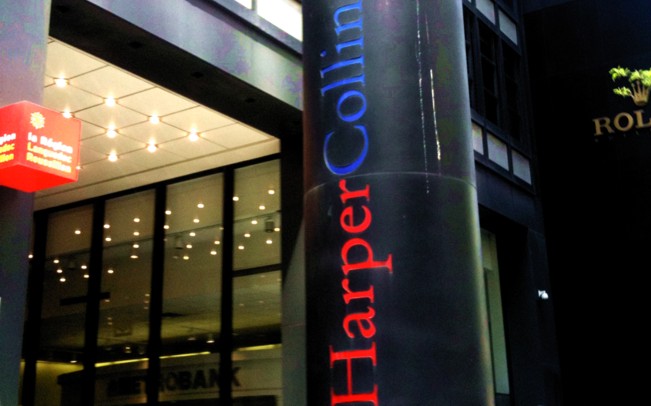
Ms Claire Wachtell
HarperCollins Publishers
10 East 53rd Street
New York NY 10022
Dear Ms. Wachtel,
I am guessing, and in fact hoping, that you are receiving many letters similar in content to the one I am about to write. I hope, also, that you have been inspired by these letters to look further into the matter of Meredith Kercher’s cruel and untimely death, and at the bizarre and disrespectful behaviour of her flatmate and purported friend, in the hours subsequent to Ms. Kercher’s murder.
None of us witnessed the attack - had we been there, we would surely have intervened on her behalf - and, therefore, we cannot absolutely finger Ms. Knox and/or her “boyfriend” as the attackers, in spite of a curious amount of suggestive and incriminating circumstantial and physical evidence.
We can, however, express our considerable distaste at the idea of Ms. Knox benefitting financially from exploiting the sordid tale of a misadventure that resulted purely from her own irresponsible and reckless behaviour. Please consider:
- She arrived in Europe and proceeded to revel in her newfound sexual identity, indiscriminately associating with men unfamiliar to her flatmates. She behaved without consideration for her own safety, let alone theirs. She laughed off their concern as prudishness.
- With her “boyfriend” (the term could only be taken in the loosest sense, as she had met him barely a week before the murder), she proceeded to experiment with narcotics, to the extent that she apparently believed that to tell the police investigating a vicious murder which took place in the bedroom adjacent to her own, that she was “too stoned too remember” her whereabouts or actions, was a wise course to take.
- While Meredith’s tortured body lay upon a cold slab in the coroner’s, Ms. Knox saw it as fitting conduct to galavant about a lingerie shop with her “boyfriend”, holding up g-strings and giggling about wild sex. She absented herself from a candlelight memorial held for Meredith, attended, respectfully, by close friends as well as people who certainly had less of a personal connection to the slain woman than did her own flatmate. She concocted ridiculous and contradictory accounts, both for the increasingly frustrated police and for friends, family and acquaintances back home (in a 4 page email, which I highly recommend you read), which not only illustrated her callous disregard for Meredith and of the seriousness of her own situation, but pointed to clues as to her involvement.
- She had no one but herself to blame for her repeated questioning and subsequent arrest. Had she behaved like any normal person (and one need only look to the plentiful examples of Meredith’s other friends and neighbours in Perugia for inspiration: Filomena Romanelli, Laura Mezzetti, Giacomo Silenzi, Robyn Butterworth, Sophie Purton, Amy Frost, Samantha Roddenhurst, all of whom were aghast at Knox’s coldness) she had ample opportunity to say,“Please, I am upset, I’m in shock; someone was stabbed and left to die in the room right next to mine! I don’t know who it was, but, dear god, it was not me!” Instead, she made up stories about mops and doors that were normally locked or unlocked, about being terrified of her employer whom she had described only days earlier as being a kind and good person. She sat in the police station with her lover of the week, and in whispers tried to incriminate other acquaintances - anyone they could throw to the wolves to save their own hides.
- The DNA evidence may not have been abundant, but it was ample and most certainly was not absent. Their lies were indeed abundant, contradicting not only one another’s alibi accounts but their own. The circumstantial evidence against them is most disturbing.
- Despicable only in second place to the behaviour of Ms. Knox and Mr. Sollecito was the conduct of their immediate families, subsequent to their understandable arrest.
I live in West Seattle and have witnessed firsthand the distasteful circus that was the Gogerty-Marriott PR circus designed to recreate Amanda Knox as the Ivory Snow Girl, while grinding Meredith Kercher, who deserved nothing she suffered on 1 November 2007, into utter obscurity.
The Sollecitos went even lower than paying a set of spin doctors, when they released forensic video footage of the crime scene, including unmistakable images of the victim’s nude and battered body, to the Bari television network, Telenorba, which proceeded to air the footage several times. Imagine how you would feel, as the parent, sibling, or friend of a young stabbed, strangled and sexually violated individual, to learn that this is her only value to the world after her death. Shock entertainment to a television viewing audience?
So, having read this, I ask you, honestly, what is the value to the world of a ghostwritten (as she lacks the ability to compose a coherent sentence, unaided) memoir by Amanda Knox?
- She can’t tell us what we want to know about Meredith’s final hours (unless she wishes to revert to the alibi version in which she WAS at the cottage, blocking out the screams).
- She wouldn’t have the nerve, four years on, to suddenly gush on again over how horrible it must have been for Meredith, how terrifying and agonising to be mutilated in such a manner, and left to die without hope of attracting attention or alerting aid from outside her bedroom walls.
- She wouldn’t have the gall to offer her condolences to the Kerchers within the same covers of a volume whose main thrust is to whine to the world about how miserable it was to spend 4 years in prison because her brain was so addled by narcotics she was unable, throughout her police and courtroom questioning, to come up with a scenario that made one iota of sense.
I don’t know your opinion on her conviction, which, until the Supreme Court has rendered a decision, still stands, but I sincerely hope that you are not viewing this book project as an enjoyable opportunity to work with an ebullient and bright Amanda Knox, or, worse, to put the “real truth” before the public.
In either case, I fear you will be gravely disappointed and sorrowfully mistaken.
Yours, Mimi (full name in the original)
[Below: the seemingly hornswoggled Jonathan Burnham and Claire Wachtell of the HarperCollins house]
